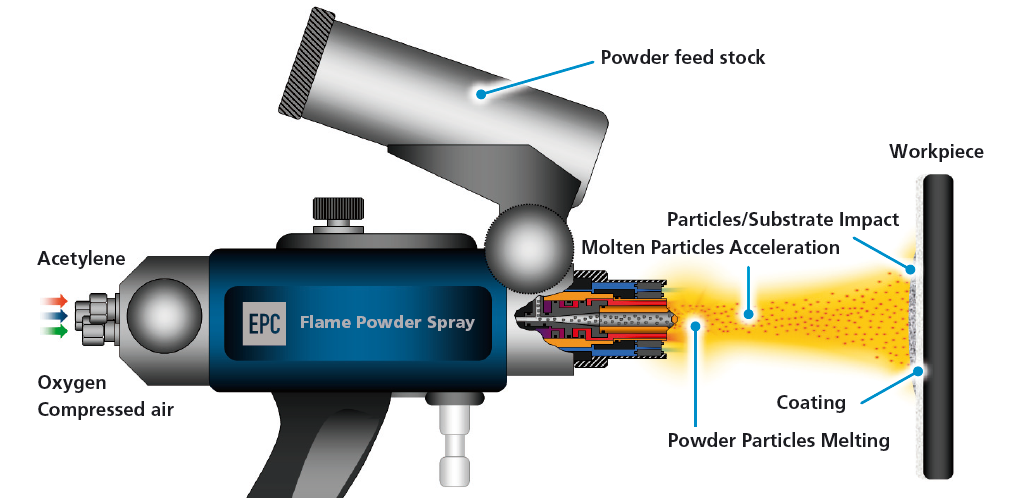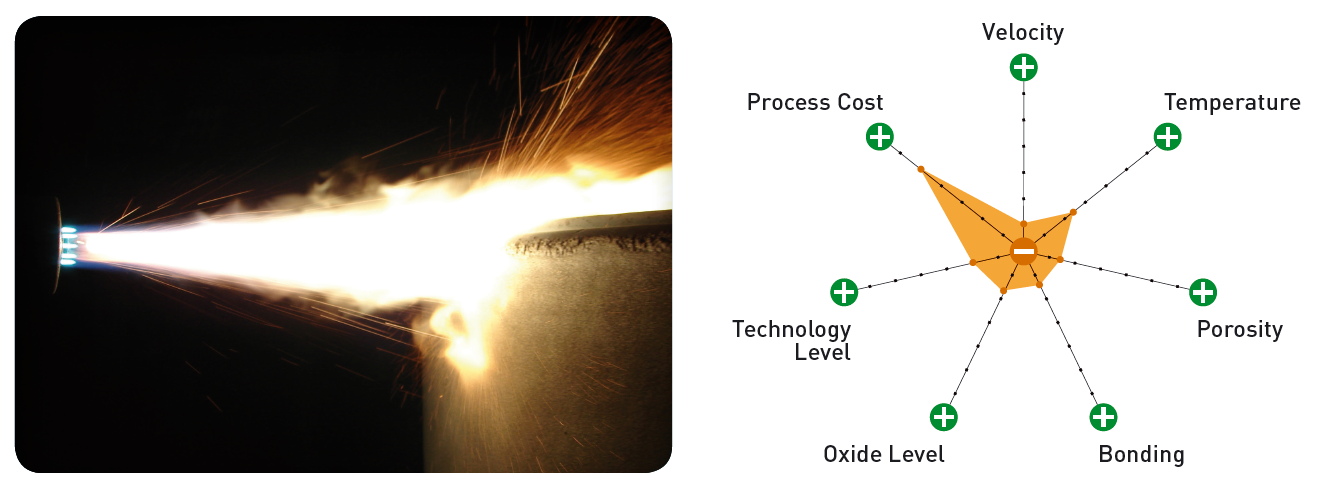Combustion flame spraying is the process by which a gaseous fuel and oxygen are combined within a controlled environment in order to create an energy source that is capable of depositing various Metallic and/or Ceramic surface coatings.
The spray material is fed continuously into the middle of the flame via an inert carrier gas. The flame consists of oxygen and a fuel gas, either acetylene or hydrogen depending on the melting point of the material to be sprayed and typically can achieve temperatures in excess of 3,000°C. When the spray stream is passed across the surface of the substrate material, the molten material rapidly cools forming a coating.
The combustion flame spraying process, compared with others, is relatively low energy and can be used to spray substrates that cannot be exposed to high temperatures. This can help when component distortion and structural damage is an issue. There are two forms of combustion spraying, using powder or wire stock material, each suited to different applications.
Combustion flame spraying can be used to make repairs, improve efficiency and restore dimensions. It is often a cost-effective method when repairs are required to high cost components. It is most often used for applying coatings that have high oxide and porosity levels and can be used to achieve rough coatings. They also provide very low stress coatings, therefore allowing very thick coatings to be applied.


Frequently Asked Questions
How does flame spray provide protection against wear and corrosion?
Flame spray coatings offer robust protection against both wear and corrosion. The process creates a thick, low‑stress coating that can be customized using powder or wire feedstocks, making it a highly adaptable solution for industrial components.
Can flame spray services apply coatings without damaging heat-sensitive substrates?
Yes. Flame spray services use lower operating temperatures—below 3,000 °C—and apply coatings through combustion, making them suitable for substrates that would be damaged by extreme heat or distortion.
What materials can be used in flame spraying?
The method supports a wide variety of materials. Operators commonly apply metals (such as aluminum, stainless steel), nickel alloys, bronze, low‑carbon steel, as well as ceramics and carbides, depending on the application needs.
Is flame spray a cost-effective solution for large or irregular components?
Absolutely. Flame spray services are among the most cost-efficient thermal coating methods. Their portability and manual application make them especially effective for coating large, irregular or hard-to-access parts.
In which industries are flame spray services most commonly used?
Flame spray is versatile and used across multiple sectors. These include oil & gas, pulp & paper, printing, manufacturing, and wind energy, particularly for parts like turbine blades, shafts, rollers, bearing surfaces, and extruder components.
Who can provide flame spray coating services in countries like the UK and North America?
Companies such as EP Coatings offer professional flame spray coating services for a wide range of industrial components. Based in the UK and US and supported by the international STS Group, they make the same proven coating technologies available to customers in North America. This ensures consistent quality, reliable turnaround times, and coatings that improve hardness, wear resistance, and corrosion protection across both regions.